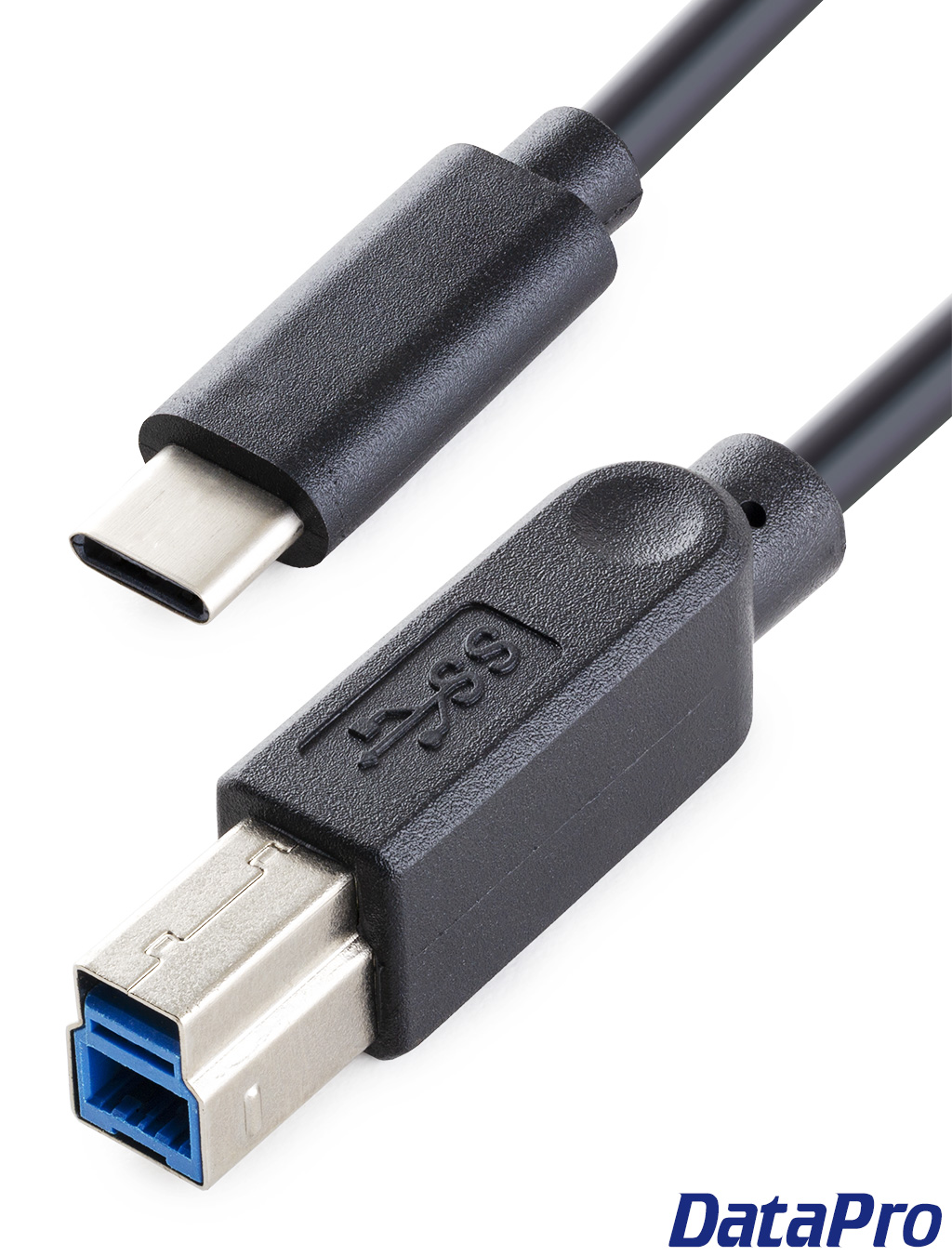 USB stands for Universal Serial Bus. It is a standard by which data and power can be transmitted between computing devices. Originally created as a connector for computer peripherals such as keyboards, mice, and external storage devices, it has also become a ubiquitous standard for charging portable devices like wireless phones and tablets. A "universal" standard may have been an optimistic goal when USB was first brought to market, but it has been largely achieved - today, virtually every computing device implements some form of it.
USB stands for Universal Serial Bus. It is a standard by which data and power can be transmitted between computing devices. Originally created as a connector for computer peripherals such as keyboards, mice, and external storage devices, it has also become a ubiquitous standard for charging portable devices like wireless phones and tablets. A "universal" standard may have been an optimistic goal when USB was first brought to market, but it has been largely achieved - today, virtually every computing device implements some form of it.
This guide covers the basics of USB. For more information about specific aspects of the spec, see our other pages:
Index:
- What are the versions of USB?
- Which side of a USB connector is "up"?
- What are the types of USB connectors?
- How long can USB cables be?
More USB Information:
- USB 3.0 Guide and FAQ - Now known as USB 3.2 Gen 1
- USB4 Guide and FAQ - Info about the newest USB version
- USB Type-C Guide and FAQ - The most versatile connector!
What are the versions of USB?
There have been four major releases of the USB standard. The original in 1996, followed by USB 2.0 in 2000, USB 3.0 in 2008, and USB 3.1 in 2013. The most recent updates, originally termed USB 3.0 and 3.1, have since been renamed USB 3.1 gen 1 and USB 3.1 gen 2. You can read more about the difference between USB 3 in our Guide to USB 3.0.| Version | Release Date | Maximum Bandwidth | Connectors |
|---|---|---|---|
| USB 1.0 | 1996 | 1.5 Mbit/s | USB-A, USB-B |
| USB 1.1 | 1998 | 12 Mbit/s | USB-A, USB-B, USB Mini-B |
| USB 2.0 | 2000 | 480 Mbit/s | USB-A, USB-B, Mini-B, Micro-B |
| USB 3.0 (now USB 3.2 Gen 1) | 2008 | 5 Gbit/s | USB-A, USB-B SuperSpeed, Micro-B SuperSpeed, USB-C |
| USB 3.1 (now USB 3.2 Gen 2) | 2013 | 10 Gbit/s | USB-A, USB-B SuperSpeed, Micro-B SuperSpeed, USB-C |
| USB 3.2 (now USB 3.2 Gen 2x2) | 2017 | 20 Gbit/s | USB-A, USB-C |
| USB4 (in Gen 2x2 and 3x2 variants) | 2019 | 20-40 Gbit/s | USB-C |
Which side of a USB plug is "up"?
USB Type-A appears fairly symmetrical at first glance, which can make it difficult to get the orientation right on the first try.The easiest sign to look for is the location of the USB logo. This will typically be printed (molded) on the top of the male connector.
A less convenient but more reliable way to tell is to look at the plastic tab inside the connector. In the female connector, the tab will be at the top. On the male connector, it will be on the bottom.
Finally, you can tell by the location of the seam in the metal of the connector. Male or female, the seam will be on the bottom.
What are the types of USB connectors?
Individual USB products are defined by both their standard and their connector or connectors. These are the five common types of USB connector that work with USB 2.0. For USB 3.0 connectors, see our USB 3.0 guide. USB4 uses only the USB-C connector.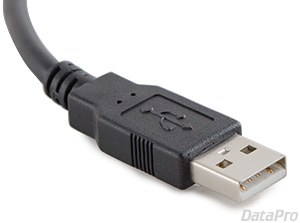
The Type-A connector is the familiar rectangle and is intended to connect directly to a host or hub. It was designed to fit into its socket in only one possible orientation, while cables were intended to have a Type A connector only at one end so that power could flow in only one direction.
Related Products:
Related Products:
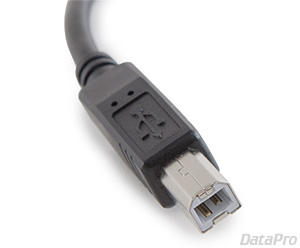
The Type-B connector is the original counterpart to the Type A connector. It is a tapered square, designed to fit in only one orientation, and to make the traditional A to B cable function in only one direction. While the traditional Type B connector is fine for devices intended to stay plugged in most of the time, such as USB printers, it was not designed to endure thousands of insertion-removal cycles.
Related Products:
Related Products:
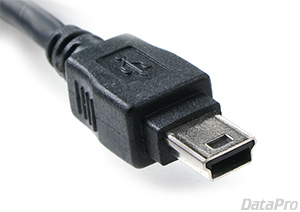
The Mini-B connector is smaller and more durable than its predecessors. It was designed for supplying power and data to mobile devices which will be connected and disconnected thousands of times.
Related Products:
Related Products:
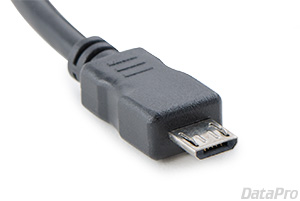
The Micro-B connector is a small chamfered rectangle, designed to last twice as long as the Mini-B connector. The vast majority of mobile devices accept the Micro-B connector, as of 2016.
Related Products:
Related Products:
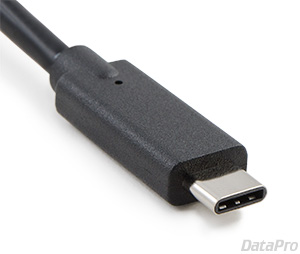
The Type-C connector is the latest addition to the lineup and is reversible in both cable and connector orientation. The connector has no "right side up" or "upside down". Also unlike previous USB cables, either end may be connected to either the host or the device. Read more about USB type-C here!
Related Products:
Related Products:
How long can a USB cable be?
One of the most common problems we help solve is the length limitation of USB. Because of the manner in which data is carried through the cable, USB cables have a practical maximum length of approximately 15 feet. There are three solutions we typically recommend, each with different strengths and weaknesses.
The most popular and affordable method is to use a Boosted USB Extension Cable. These contain a small "booster" module at the female end, which receives and repeats the signal. Shorter boosted cables can be daisy-chained together, while longer cables use an integrated booster every 15 feet. These methods can extend the range of USB up to around 80 feet.
Related Products:
Related Products:
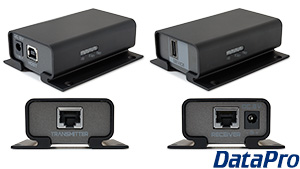
For longer distances, a USB over Ethernet adapter may be preferable. These consist of two boxes, a transmitter and receiver, connected by a standard Ethernet cable. Although they have a range of up to 100m (328ft), they are currently limited to USB 2.0 speeds (480Mbps).
Related Products:
Related Products:

Finally, the ultimate long-distance (and low-interference) method of extending USB is to use a fiberoptic extender. These are similar to the Ethernet method above, but employ a fiberoptic cable as the medium. While these tend to be the most expensive option, they also allow the greatest distances and speed. Depending on the device used, it's possible to achieve ranges of over a mile!
Related Products:
Related Products:
Looking for more information?
This article is part of a series about USB. Should you have any questions, or if you're looking for a specific solution, feel free to contact our Sales department.
Check out some of our other popular tech guides for even more information:
This article is part of a series about USB. Should you have any questions, or if you're looking for a specific solution, feel free to contact our Sales department.
Check out some of our other popular tech guides for even more information:







